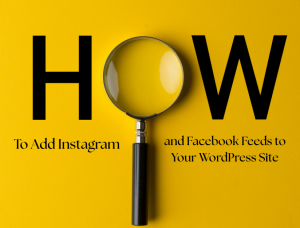In today’s digital age, advertising plays a crucial role in reaching potential customers and growing your business. With the dominance of online platforms, two major players stand out: Google Ads and Meta Ads (formerly known as Facebook Ads). Both platforms offer powerful tools for targeting specific audiences and achieving marketing objectives. However, when it comes to deciding which platform to invest your advertising budget in, it’s essential to understand the unique features, strengths, and limitations of each. In this comprehensive guide, we’ll delve into the comparison between Google Ads and Meta Ads to help you make an informed decision for your business.
Understanding Google Ads
Google Ads, formerly known as Google AdWords, is the leading pay-per-click (PPC) advertising platform, dominating the search engine advertising space. With Google Ads, businesses can create text, display, video, and shopping ads that appear on Google’s search results pages, as well as on websites within Google’s extensive Display Network. Here are some key features of Google Ads:
1 Intent-based Targeting: Google Ads leverages user search queries to display ads, making it ideal for capturing audiences actively searching for products or services related to your business.
2 Keyword Targeting: Advertisers bid on keywords relevant to their business, ensuring their ads appear when users search for those specific terms.
3 Extensive Reach: Google processes billions of searches every day, providing advertisers with access to a vast audience worldwide.
4 Performance Tracking: Google Ads offers comprehensive analytics and tracking tools to monitor ad performance, measure conversions, and optimize campaigns for better results.
Exploring Meta Ads (Facebook Ads)
Meta Ads, powered by the Meta platform (formerly Facebook), is a powerhouse in social media advertising. With over 2.8 billion monthly active users across its family of apps, including Facebook, Instagram, Messenger, and WhatsApp, Meta Ads offers advertisers unparalleled access to a diverse audience. Let’s explore its key features:
1 Audience Targeting: Meta Ads allows advertisers to target users based on demographics, interests, behaviors, and even specific interactions with their brand, offering precise audience segmentation capabilities.
2 Visual Content: Meta Ads emphasize visual content, making them particularly effective for brand awareness campaigns, product showcases, and storytelling through images and videos.
3 Engagement Opportunities: Meta Ads provide various engagement options, including likes, comments, shares, and direct messages, enabling advertisers to foster meaningful interactions with their audience.
4 Advanced Analytics: Meta Ads offer robust analytics and insights into ad performance, audience demographics, and engagement metrics, empowering advertisers to refine their targeting and optimize campaigns for better results.
Choosing the Right Platform
Now that we’ve explored the key features of Google Ads and Meta Ads, let’s discuss factors to consider when choosing the right platform for your business:
1 Audience: Consider where your target audience spends their time online. If they are more active on social media platforms like Facebook and Instagram, Meta Ads may be the better choice. However, if they frequently use search engines like Google to find products or services, Google Ads might yield higher conversion rates.
2 Advertising Goals: Define your advertising objectives, whether it’s driving website traffic, generating leads, increasing sales, or boosting brand awareness. Google Ads is well-suited for capturing high-intent users ready to make a purchase, while Meta Ads excel in building brand affinity and engagement.
3 Budget and ROI: Evaluate your advertising budget and expected return on investment (ROI). Google Ads typically operate on a cost-per-click (CPC) or cost-per-thousand-impressions (CPM) basis, while Meta Ads offer flexible bidding options and budget optimization features.
4 Ad Content: Consider the type of content you want to promote. If you have visually appealing products or compelling brand stories to share, Meta Ads’ emphasis on visual content may be more effective. However, if you’re promoting services or targeting users actively searching for specific solutions, Google Ads’ text-based ads could be more suitable.
Conclusion
In conclusion, both Google Ads and Meta Ads offer powerful advertising platforms with distinct features and advantages. The right choice depends on your business objectives, target audience, budget, and the type of content you want to promote. Consider experimenting with both platforms to determine which yields the best results for your specific goals. Ultimately, a strategic approach that integrates both Google Ads and Meta Ads into your marketing mix may provide the most comprehensive reach and impact for your business.






